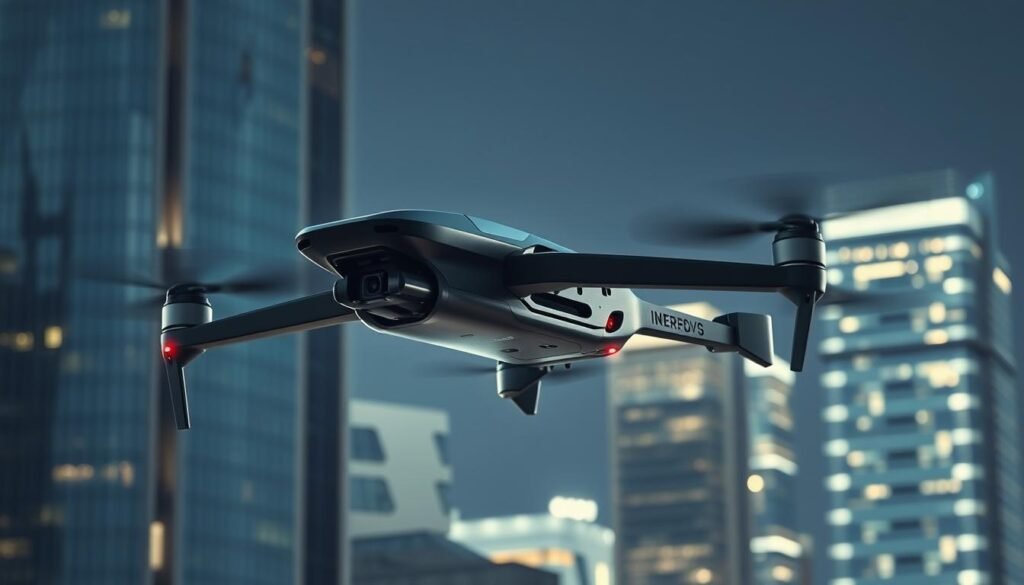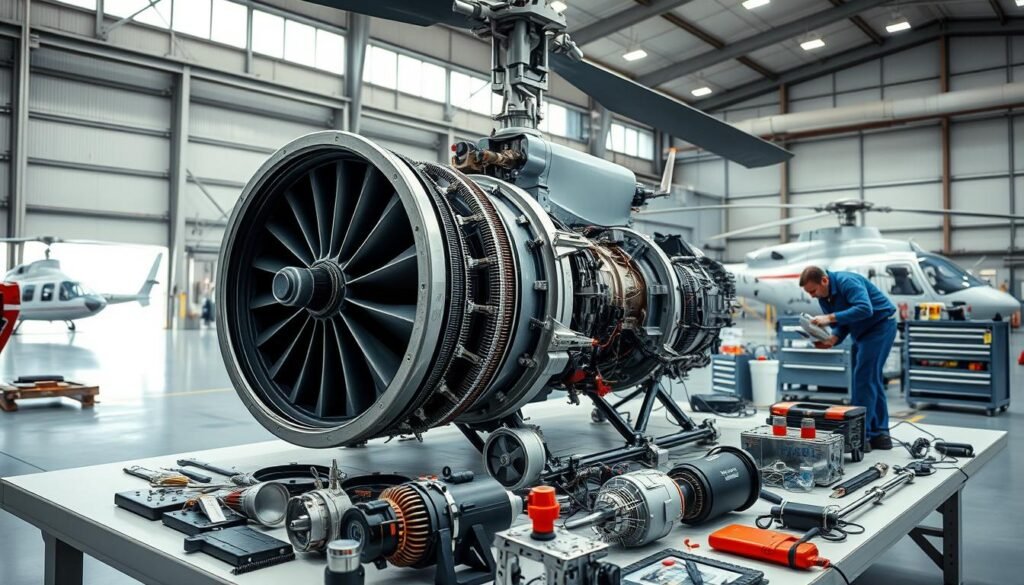The aviation industry is on the brink of a major transformation, driven by advancements in autonomous technology. While self-driving cars have garnered much of the public’s attention, autonomous helicopters are poised to revolutionize how we think about air travel, cargo transport, and emergency services. Autonomous helicopters—those capable of flying without a human pilot onboard—offer exciting possibilities for the future of aviation. In this article, we will explore the current state of autonomous helicopter technology, the challenges it faces, and the potential applications that could reshape the industry.
1. Current Developments in Autonomous Helicopter Technology
Autonomous flight technology has made significant strides in recent years, with both government agencies and private companies investing heavily in research and development. Helicopters, known for their versatility and ability to operate in difficult environments, are prime candidates for autonomous technology.
Key Technologies Enabling Autonomous Helicopters:
- Advanced Sensors and LIDAR: Autonomous helicopters rely on a range of sensors, including LIDAR (Light Detection and Ranging) and radar, to create 3D maps of their surroundings. These systems allow the helicopter to detect and avoid obstacles, such as buildings, trees, and other aircraft, even in poor weather or low visibility.
- Artificial Intelligence (AI) and Machine Learning: AI algorithms help autonomous helicopters process data from sensors and make real-time decisions about navigation, flight path adjustments, and emergency responses. Machine learning enables the aircraft to improve performance over time by learning from previous flights.
- Autonomous Flight Control Systems: Modern flight control systems allow helicopters to take off, hover, land, and even perform complex maneuvers without human intervention. These systems rely on GPS, gyroscopes, and inertial navigation systems to maintain stability and precision during flight.
2. Benefits of Autonomous Helicopters
The potential benefits of autonomous helicopters are numerous, ranging from cost savings to improved safety and new operational capabilities.
Key Benefits:
- Increased Safety: Autonomous systems can reduce the risk of human error, which is a leading cause of aviation accidents. By relying on advanced algorithms and sensors, autonomous helicopters can make precise decisions, such as avoiding obstacles and maintaining optimal flight paths.
- Cost Efficiency: Removing the need for an onboard pilot can reduce operational costs, such as pilot salaries and training expenses. Autonomous helicopters also have the potential to fly more efficiently, optimizing fuel usage and reducing maintenance costs.
- 24/7 Operations: Autonomous helicopters are not limited by human constraints such as fatigue or work hours. They can operate continuously, providing round-the-clock services for critical missions like search and rescue, medical transport, or cargo delivery.
- Access to Remote Areas: Autonomous helicopters can navigate challenging terrains, such as mountains or dense forests, where traditional piloted aircraft might struggle. This makes them ideal for missions in remote or dangerous locations.
3. Potential Applications for Autonomous Helicopters
The development of autonomous helicopters opens up a wide range of applications across various industries. Here are some of the key areas where autonomous helicopters could have the most significant impact:
A. Search and Rescue (SAR) Missions
Autonomous helicopters equipped with advanced sensors and AI systems could revolutionize search and rescue operations. They can be deployed quickly in remote or dangerous areas, such as mountains, forests, or disaster zones, to locate missing persons or provide aid.
- Advantages in SAR:
- Rapid response times: Autonomous helicopters can be dispatched immediately, without the need for human pilots, reducing response times in critical situations.
- Night operations: These helicopters can use infrared and thermal imaging to conduct search operations at night or in low-visibility conditions.
B. Emergency Medical Transport
In emergency medical services (EMS), time is critical. Autonomous helicopters can transport patients or deliver medical supplies to hospitals without delays caused by pilot availability or weather conditions.
- Autonomous Helicopter EMS Benefits:
- Direct routing: Autonomous helicopters can calculate and follow the most direct and efficient routes to hospitals or emergency locations, bypassing traffic and other obstacles.
- Unmanned medical supply delivery: During disasters or pandemics, autonomous helicopters can deliver vital medical supplies to hard-to-reach areas without risking the lives of human pilots.
C. Cargo and Package Delivery
Autonomous helicopters are also being considered for cargo and package delivery, offering a faster and more flexible solution than ground transportation. Large companies like Amazon and UPS are exploring the use of drones and autonomous helicopters to deliver goods efficiently, particularly in congested urban areas.
- Advantages in Cargo Transport:
- Urban air mobility: Autonomous helicopters can deliver packages within cities, reducing congestion on the roads and offering faster delivery times.
- Long-distance freight: Larger autonomous helicopters can be used to transport heavy cargo over long distances, providing an alternative to trucks or airplanes.
D. Military and Defense Applications
The military is one of the most significant investors in autonomous helicopter technology. Unmanned helicopters can be deployed for a variety of missions, including reconnaissance, logistics support, and combat.
- Military Use Cases:
- Reconnaissance and surveillance: Autonomous helicopters can gather intelligence, conduct surveillance, and monitor areas of interest without putting human pilots in danger.
- Unmanned combat: Armed autonomous helicopters could be used in combat scenarios, allowing for precision strikes while keeping soldiers out of harm’s way.
4. Challenges Facing Autonomous Helicopter Development
While the potential of autonomous helicopters is exciting, several challenges remain before they can be fully integrated into mainstream aviation.
A. Regulatory Hurdles
A significant challenge for autonomous helicopter adoption is the lack of regulatory frameworks. Aviation authorities, such as the FAA and EASA, must develop rules and guidelines for the certification, operation, and safety of autonomous aircraft.
- Regulatory Concerns:
- Airspace integration: Ensuring that autonomous helicopters can safely share airspace with piloted aircraft is a critical regulatory challenge.
- Certification standards: Autonomous helicopters will need to meet stringent safety and operational standards before they can be approved for widespread use.
B. Public Perception and Trust
The idea of an autonomous helicopter without a pilot may be unsettling for some passengers or industries. Gaining public trust will be essential for the widespread adoption of autonomous helicopters.
- Building Trust:
- Proving safety: Manufacturers will need to demonstrate the safety and reliability of autonomous helicopters through rigorous testing and transparent reporting.
- Gradual introduction: Autonomous helicopters may first be introduced in cargo or emergency services before being used for passenger transport to build public confidence.
C. Technological Limitations
Although significant advancements have been made, there are still technological limitations that need to be addressed before autonomous helicopters can operate reliably in all conditions.
- Technological Challenges:
- Weather resilience: Autonomous helicopters must be able to operate safely in various weather conditions, including heavy rain, wind, and snow.
- AI decision-making: The AI systems that control autonomous helicopters must be capable of making split-second decisions in dynamic environments, such as crowded airspace or rapidly changing terrain.
5. The Future of Autonomous Helicopters
Despite the challenges, the future of autonomous helicopters looks promising. As technology continues to advance and regulatory frameworks evolve, autonomous helicopters will likely become a standard part of the aviation industry. In the coming decades, we can expect to see fully autonomous helicopters playing key roles in urban air mobility, emergency services, and military operations.
- Key Innovations on the Horizon:
- Electric autonomous helicopters: Combining electric propulsion with autonomous technology could result in quieter, more environmentally friendly helicopters.
- AI-driven improvements: As AI systems continue to improve, autonomous helicopters will become more capable of handling complex tasks, such as coordinating with other aircraft or responding to unexpected emergencies.
Conclusion
The future of autonomous helicopters holds immense potential for transforming the aviation industry. From search and rescue missions to cargo transport and military operations, autonomous helicopters can offer increased efficiency, safety, and flexibility. While there are still regulatory and technological challenges to overcome, ongoing advancements in AI, sensors, and flight control systems will continue to push the boundaries of what autonomous helicopters can achieve. As the technology matures, we may soon see a future where autonomous helicopters are an integral part of everyday life.
Related Articles
- Understanding Helicopter Vibration Analysis: Key to Preventing Major Failures
- How AI and Big Data Are Shaping the Future of Helicopter Maintenance
- Upgrading Helicopter Systems: When and Why to Modernize Your Aircraft
- The Importance of Regular Avionics Checks for Helicopter Performance
- Helicopter Maintenance in Extreme Weather Conditions: What Technicians Need to Know
More from This Category
- Digital Cockpits: How Modern Technology Is Transforming Helicopter Navigation
- The Role of Predictive Maintenance in Helicopter Fleet Management
- Innovative Materials in Helicopter Design: Enhancing Durability and Efficiency
- How Helicopter Technology Is Revolutionizing Emergency Response Operations
- Rotor Blade Maintenance: Why It’s Critical for Safe Flight
- The Future of Autonomous Helicopters: What Technology Holds for the Aviation Industry
- Helicopter Engine Maintenance: Best Practices for Longevity and Efficiency
- How Advances in Avionics Are Improving Helicopter Safety and Performance
- Routine Helicopter Maintenance Checklist: What Every Pilot Should Know
- The Evolution of Helicopter Technology: From Early Models to Modern Innovations



